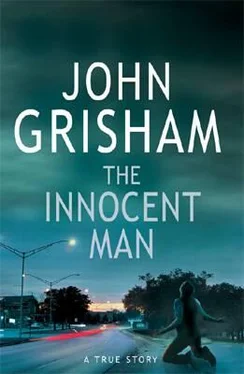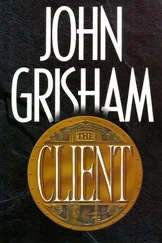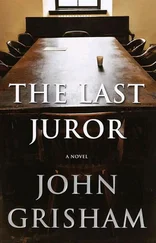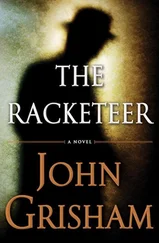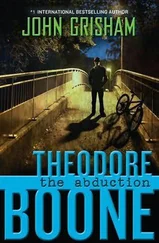Thus, Glen Gore became the only witness with direct evidence against Ron Williamson. By placing him in contact and in conflict with Debbie Carter just hours before her murder, he, technically, established the link between the murderer and his victim. All other evidence was circumstantial.
Only a prosecutor as determined as Bill Peterson would be brazen enough to allow a criminal like Glen Gore anywhere near his case. Gore had been brought to the preliminary hearing in cuffs and chains. He was serving a forty-year prison sentence for breaking and entering, kidnapping, and attempting to kill a police officer. Five months earlier, Gore had broken into the home of his former wife, Gwen, and taken her hostage, along with his young daughter. He was drunk and for five hours held them at gunpoint. When a policeman, Rick Carson, glanced through a window, Gore aimed, fired, and hit Carson in the face. Fortunately, the injuries were not serious. Before sobering up and surrendering, Gore also shot at another police officer.
It was not his first violent altercation with Gwen. In 1986, during the unraveling of their rocky marriage, Gore was charged with breaking into Gwen's house and stabbing her repeatedly with a butcher knife. She survived and pressed charges, and Gore faced two counts of first-degree burglary and one count of assault and battery with a dangerous weapon.
Two months earlier, he'd been charged for assaulting Gwen by choking her. In 1981, he'd been charged for forcibly entering the home of another woman. Gore also had an assault-and-battery charge from his Army days and a long list of convictions for petty crimes.
One week after his name was listed as an additional witness against Ron Williamson, a plea-bargain agreement was filed. At the same time, one charge of kidnapping and one of assault with a dangerous weapon were dismissed. When Gore was sentenced, his exwife's parents filed a letter with the court in which they begged for a long prison sentence. It read, in part:
We want you to be aware of how dangerous we feel this man is. He intends to kill our daughter, granddaughter, and ourselves. This he has told us. We have gone to great lengths to make our daughter's home burglar proof, but all failed. To go into detail all the times he has attacked her would make too lengthy a letter. Please give our daughter enough time to get the child raised before he is out of prison and the terror starts, so the little one never has to live through that again.
***
For years, Barney Ward had suspected that Glen Gore was involved in the Carter murder. He was a career criminal with a history of violence against women, and he was the last person seen with the victim. It was incomprehensible that the police showed so little interest in Gore.
Gore's fingerprints were never submitted to the OSBI for analysis. Prints from a total of forty-four people were submitted, but not Gore's. At one point, he agreed to take a polygraph exam, but one was never administered. The Ada police lost the first set of hair samples Gore gave them, some two years after the murder. He then submitted another set, and perhaps another. No one could remember exactly.
Barney, with his uncanny ability to hear and remember the courthouse gossip, firmly believed that Gore should have been investigated by the police. And he knew that his boy, Ronnie Williamson, was not guilty.
The Gore mystery was partially explained fourteen years after the preliminary hearing. Glen Gore, still in prison, signed an affidavit in which he stated that during the early 1980s he was selling drugs in Ada. He mentioned methamphetamine. Some of his transactions involved Ada policemen, specifically one Dennis Corvin, whom Gore described as a "primary supplier" and who frequented Harold's Club, where Gore worked. When Gore owed them money, they would arrest him under false pretenses, but for the most part the cops left him alone. Under oath, he said in his affidavit, "However, most of the time during the early 1980's I was aware that I was receiving favorable treatment from Ada law enforcement because I was involved in drug transactions with them." And, "This favorable treatment ended when I was no longer involved in the drug business with Ada police." He blamed his forty-year prison sentence on the fact that he "was no longer selling drugs to the Ada police."
Regarding Williamson, Gore said in 2001, he did not know if Ron was at the Coachlight the night of the murder. The police showed him a lineup of photos, pointed to Ron, and explained that he was the man they were interested in. "Then they directly suggested that I identify Mr. Williamson."
And, "To this day I do not know if Ron Williamson was at the bar on the night that Debbie Carter disappeared. I made the identification because I knew the police expected me to do that."
Gore's affidavit was prepared by an attorney, and it was reviewed by his own lawyer before he signed it.
The state's next witness was Tommy Glover, a regular at the Coach-light and one of the last to see Debbie Carter. His initial recollection was that she was talking with Glen Gore in the parking lot and that she pushed him away before driving off.
But four years and seven months later, he remembered things a bit differently. Glover testified at the preliminary hearing that he saw Gore speak to Debbie and that she got in her car and drove away. Nothing more or less.
Charlie Carter testified next and told the story of finding his daughter on the morning of December 8, 1982.
OSBI agent Jerry Peters, a "Crime Scene Specialist," was called to the stand. It wasn't long before he was in trouble. Barney smelled a rat and grilled Peters on his conflicting opinions about the palm print on the Sheetrock. A firm opinion in March 1983, then, surprise, an about-face in May 1987. What prompted Peters to rethink his original opinion that the palm print did not belong to Debbie Carter, Ron Williamson, or Dennis Fritz? Could it have been that this opinion didn't really help the prosecution? Peters did admit that nothing happened for four years, then a phone call early in 1987 from Bill Peterson prompted him to ponder his earlier judgment. After the exhumation and reprinting, he suddenly changed his mind and issued a report that was exactly what the prosecution wanted.
Greg Saunders joined the assault on behalf of Dennis Fritz, and it was obvious the evidence had been reconstructed. But it was only a preliminary hearing, not a trial that required proof beyond a reasonable doubt.
Peters also testified that of the twenty-one fingerprints found in the apartment and on the car, nineteen belonged to Debbie Carter herself, one to Mike Carpenter, one to Dennis Smith, and none to either Fritz or Williamson.
The prosecution's star was the amazing Terri Holland. From October 1984 to January 1985, Holland had been locked up in the Pontotoc County jail for writing bad checks. As far as unsolved murders went in Oklahoma, it was a productive and remarkable four month stay.
First she claimed she heard Karl Fontenot admit everything about the Denice Haraway kidnapping and murder. She testified in the first Ward/Fontenot trial in September 1985 and gave the jury all the lurid details that Detectives Smith and Rogers had furnished Tommy Ward during his dream confession. After she testified, she was given a light sentence on the check charges, in spite of having two prior felonies. Ward and Fontenot went to death row; Terri Holland fled the county.
She left behind some unpaid court fines and such, nothing the authorities would take seriously under normal circumstances. But they found her and brought her back anyway. Facing more charges, she suddenly had some astounding news for the investigators. When she was in jail hearing Fontenot's story, she also heard Ron Williamson make a full confession.
Читать дальше
